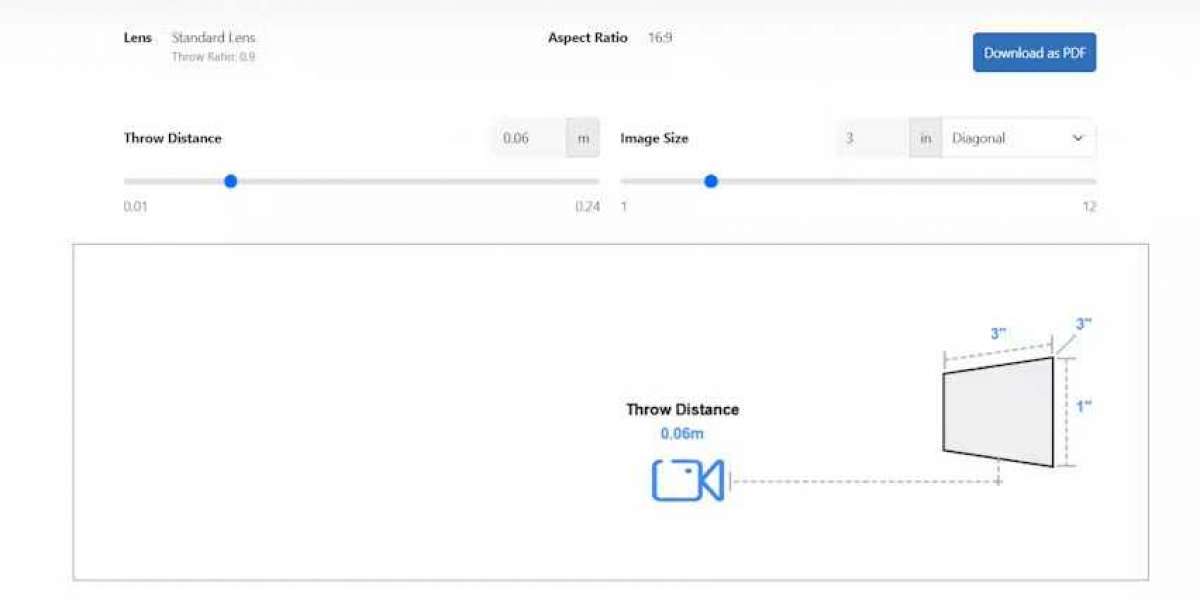When planning large format displays for corporate spaces, classrooms, entertainment venues, or public installations, cost is a key consideration. At first glance, projectors often seem more affordable than LED video walls due to lower initial purchase prices. However, evaluating the total cost over the long term requires careful consideration of installation, maintenance, lifespan, and operational efficiency. Understanding the Video Wall vs Projector debate from a financial perspective is essential for making an informed decision that balances budget and performance.
Introduction to Projectors and LED Video Walls
Projectors use light to cast images onto screens or surfaces. They come in various types, including standard throw, short throw, ultra short throw, and laser projectors. Modern projectors offer high brightness, accurate colors, and large image sizes at relatively low upfront costs. They are commonly used in classrooms, conference rooms, home theaters, and temporary event spaces.
LED video walls are composed of multiple LED panels combined to form a single display. They are known for vibrant colors, high brightness, seamless visuals, and the ability to operate continuously. LED video walls are often installed in control rooms, corporate lobbies, retail environments, broadcast studios, and large public venues.
While projectors appear cheaper initially, assessing the long term cost requires analyzing several factors beyond the purchase price.
Initial Purchase Cost
From a pure upfront perspective, projectors are usually less expensive than LED video walls. High quality laser projectors can range from a few thousand to tens of thousands of dollars depending on brightness and features. On the other hand, LED video walls require multiple panels, controllers, mounting hardware, and professional installation, which can significantly increase the initial investment.
For small to medium spaces, the initial savings from a projector can be substantial. However, cost comparison should not end with the purchase price.
Lifespan and Operational Costs
One of the most critical factors in the Video Wall vs Projector comparison is the lifespan of the display technology.
LED video walls typically have long lifespans exceeding 100,000 hours of operation. They are designed for continuous use and require minimal maintenance. Individual panels can be replaced if they fail, reducing downtime and ongoing costs. Energy consumption has also become more efficient with modern LED technology, lowering operational expenses.
Projectors have a shorter effective lifespan. Lamp based projectors may require replacement every few thousand hours, while laser projectors can last 20,000 to 30,000 hours or more. Projectors also require periodic maintenance, including lens cleaning, filter replacement, and recalibration. Over time, these costs can accumulate, reducing the initial savings of projectors.
Maintenance and Downtime
Maintenance is another consideration that impacts the total cost of ownership.
LED video walls are low maintenance. Once installed, they run continuously without frequent adjustments. Cooling systems are built in, and failures are often limited to individual panels, which can be swapped without taking the entire display offline. This reliability reduces operational interruptions and associated labor costs.
Projectors require ongoing attention. Dust and environmental factors can affect image quality, necessitating regular cleaning and calibration. Lamp based projectors also require replacement bulbs, which are costly and can interrupt operations during installation. Laser projectors reduce some of these maintenance requirements, but alignment and focus adjustments may still be necessary over time.
Image Quality and Ambient Conditions
Image quality and ambient conditions can also affect long term value.
LED video walls maintain high brightness and color accuracy regardless of ambient lighting. This reduces the need for specialized rooms or light control, allowing the display to function effectively in almost any environment. Consistent image quality means less risk of performance degradation that could require costly upgrades or adjustments.
Projectors, particularly in bright environments, may require high brightness models or special screens to maintain image clarity. In spaces with uncontrolled lighting, additional costs may be incurred to optimize viewing conditions. Over time, this can impact overall cost effectiveness.
Energy Efficiency
Energy consumption is another factor in long term cost evaluation.
LED video walls have become more energy efficient over the years. Despite running continuously, they consume relatively low power per panel and generate minimal heat compared to large projection systems.
Projectors, especially high brightness models, can consume significant energy. Cooling systems for projectors also add to power requirements. Over years of operation, energy costs can accumulate, further narrowing the perceived cost advantage of projectors.
Flexibility and Adaptability
While projectors offer flexibility for temporary setups and repositioning, LED video walls provide adaptability for scaling and design upgrades. New panels can be added to expand the display, and modern LED walls support high resolutions and various aspect ratios without compromising image quality. In the long run, this flexibility can reduce the need for full system replacements, adding value to the investment.
Return on Investment Considerations
When evaluating Video Wall vs Projector, total cost of ownership and return on investment (ROI) are more important than the initial purchase price. While projectors may seem cheaper upfront, LED video walls often provide superior long term value due to:
Longer lifespan and reduced maintenance
Consistent image quality regardless of ambient light
Energy efficiency and lower operational costs
Scalability and adaptability for future upgrades
For permanent installations, especially in commercial and high traffic environments, LED video walls are increasingly seen as the smarter financial choice. Projectors still have a role in flexible, temporary, or smaller scale setups, where initial cost and portability are prioritized.
Conclusion
In the Video Wall vs Projector debate, the answer to whether projectors are cheaper than LED walls in the long run is not straightforward. While projectors offer lower upfront costs, their maintenance, shorter lifespan, energy consumption, and potential image quality issues in bright environments can increase total ownership costs over time.
LED video walls, although more expensive initially, provide durability, reliability, energy efficiency, and low maintenance requirements, making them a cost effective choice for long term installations.
XTEN-AV provides tools that help AV professionals evaluate, plan, and optimize both video wall and projector installations. By accurately simulating image placement, calculating throw distances, and comparing display technologies, XTEN-AV ensures that businesses make informed decisions that balance cost, performance, and future scalability.
For anyone considering a long term AV display investment, carefully weighing all factors and leveraging professional tools like XTEN-AV is essential to maximizing value and achieving optimal visual performance.
Read more: https://whatson.plus/blogs/82617/Which-Is-the-Future-of-AV-Displays-LED-Video-Walls








